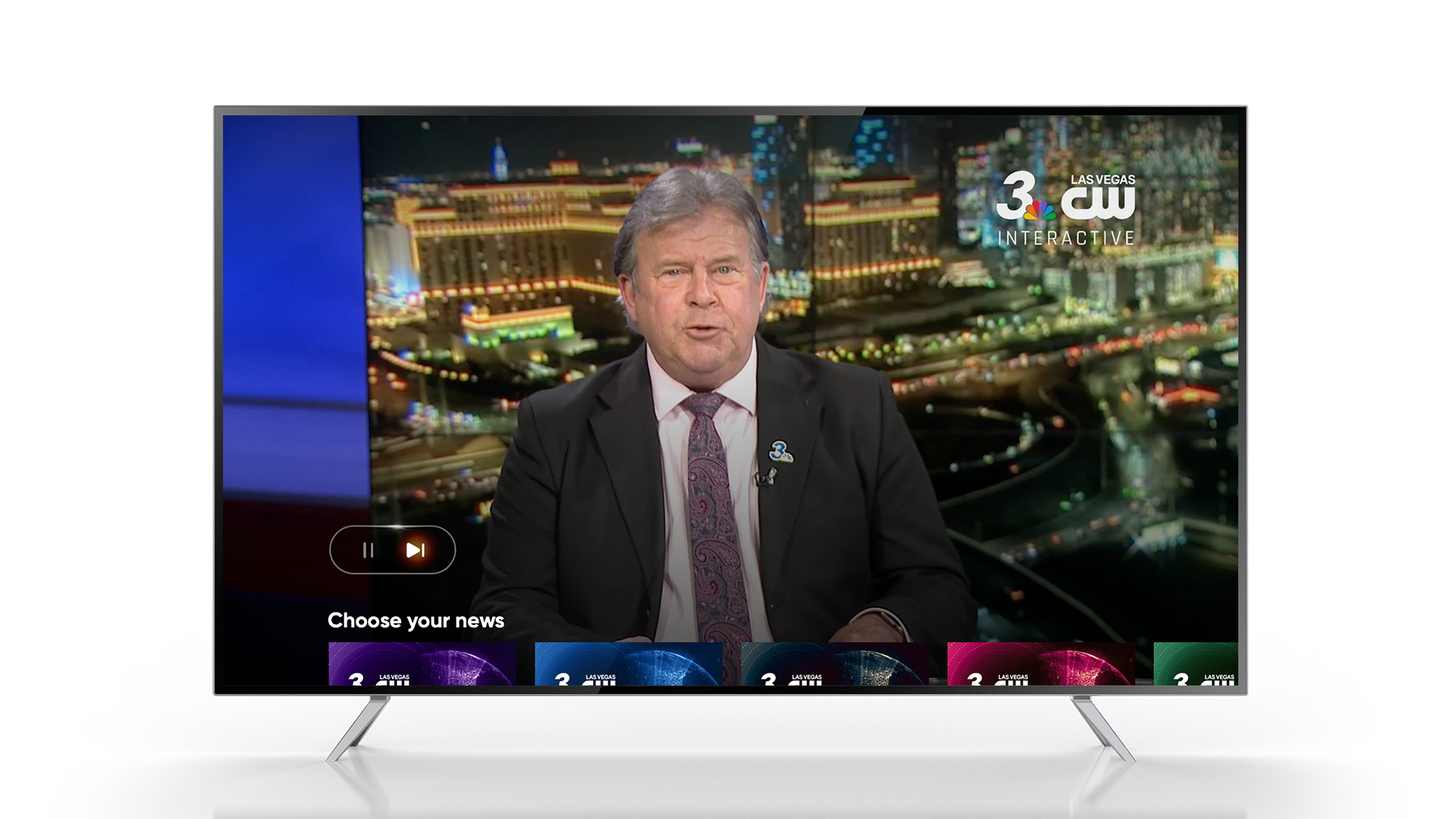
Major station owners are bringing interactivity to broadcast, hoping that will convince consumers — particularly younger ones obsessed with TikTok — to buy new NextGen TV sets.
The interactivity is being enabled by the Fast Stream technology being brought to the U.S. by Roxi. Roxi was last seen at CES announcing plans to launch an interactive music service using ATSC 3.0 on Sinclair stations
Now Roxi is working not only with Sinclair, but with all of the members of the Pearl TV group promoting NextGen TV. Those companies include Gray Television, Nexstar Media Group, Hearst Television, Tegna and E.W. Scripps.
Fast Stream will be used by stations to launch dozens of national channels and hundreds of local news channels this summer, Roxi CEO Rob Lewis told Broadcasting+Cable.
“All of the major broadcasters have the same problem of an aging viewership base and not having younger customers interested in broadcast TV,” Lewis said.
Younger viewers aren’t interested in broadcast because they don’t want to tune into shows that have already started. Nor do they want to be forced to watch a 5-minute segment they don’t want to see in order to get to the segment they do want to watch.
Some of the national interactive shows will have familiar names that will resonate with viewers — like America’s Got Talent on NBC — and help promote NextGen TV, Lewis said. But interactivity will be valuable to consumers with any news, sports or entertainment content that’s either consumed in quick bites or skipped, like TikTok.
“It’s going to get really exciting how we can bring content to life,” said Anne Schelle, managing director of the Pearl TV business group. “The interactive aspect of NextGen TV will reinvent the over-the-air environment for the consumer.”
Even better, adding interactivity should be lucrative for broadcasters.
“Very clearly once you go nationwide and once you've got a large number of channels, you very quickly get into the significant number of hundreds of millions of dollars very quickly,” Lewis said.
In Las Vegas, where NAB Show is currently underway, Roxi is working with Sinclair to put the first interactive broadcast news channel — 3 News Interactive Las Vegas — on the air on broadcast with KSNV.
“We really view this new FastStream technology strategically as a great way to differentiate ATSC 1.0 from ATSC 3.0,” said Skip Flenniken, Sinclair’s VP and GM, Technology Business Development.
“Viewers have shown a preference for having a little bit more control when consuming content,” Flenniken said. “It’ s a new broadcast experience.”
The broadcast industry is making the transition from the current ATSC 3.0 technology from ATSC 1.0.
ATSC 3.0, branded as NextGen TV, starts with a promise of a better picture and superior sound.
Sinclair has been aggressive with ATSC 3.0, with many of its stations serving as the “lighthouse” in their markets, broadcasting the NextGen signal that carries all of the participating stations in a market’s signal to sets with NextGen receivers.
Last week, Sinclair joined the group of broadcasters investing in Run3TV, which helps broadcasters develop apps for ATSC 3.0 and delivers over-the-air viewing data.
This really brings all the broadcasters together on an application framework that enables us to expand content and features across all the operations systems that are very fragmented,” Schelle said.
Pearl said that 11 million viewers already own NextGen TV receivers, and 4 million NextGen-enabled sets are expected to be sold this year. High Dynamic Range (HDR) picture quality will be available in 40% of the U.S., or 55 million homes.
Gray Television-owned WAVE Louisville became the first station to offer Dolby Vision HDR with Dolby Atmos audio.
ATSC 3.0 also promises station owners that they’ll be able to use some of their broadcast spectrum for datacasting and other digital businesses. Sinclair and a joint venture of Nexstar Media Group and the E.W. Scripps Co. have already started datacasting businesses.
BIA estimated that datacasting could generate $15 billion in incremental revenues for the stations.
But the first order of business is to get consumers to buy enough NextGen enabled TV sets to make the transition to ATSC 3.0 successful.
A better picture and better sound alone might not be firing consumers’ imagination. Now the stations are counting on interactivity to provide a good reason to get a new TV.
After Roxi and Sinclair demonstrated an interactive music channel on Sinclair’s KSNV, “we were absolutely swamped by parties who wanted to come and see more or talk about getting involved,” Lewis said.
“What we realized is we had something a little bit bigger than we had originally anticipated,” he said.
Sinclair and Roxi will be demonstrating how the technology supports an interactive newscast during the NAB shows in Las Vegas.

“This is the world’s first Interactive Local TV News Channel delivered in partnership with Sinclair on NextGen TV and it represents the future of local TV news,” said Lewis.
Roxi is building an end-to-end system that can ingest the content already being produced by stations, slice it up into segments, and load it onto the interactive channel.
Viewers will tune in the new channels and start at the beginning with headlines.
For stations, it should be easy to manage.
“Actually putting it on the air is very straightforward and very simple,” Sinclair’s Flenniken said. “Building the channel requires a little bit more work, but what [Roxi] built is so replicable that you’re able to insert content into their structure and build new channels with relative ease.”
Lewis said the commercial arrangement was basically a revenue share among the content owner, the stations as distributors, and Roxi.
“For the broadcasters it’s likely to be largest level of revenue they've ever generated per kilobyte of spectrum,” Lewis said. “They're just literally putting a tiny bit of code in the electronic program guide and then everything else is out of their hands.”
NextGen TV proponents are looking to get a virtual circle started by having content viewers want to watch generating revenue and driving the purchase of more sets, which increases the potential audience and so on.
“Very quickly you get to a substantial level of revenue,” Lewis said. “It's additional revenue that's effectively additional EBITDA because it almost completely goes to the bottom line.”
Lewis said that the broadcasters are looking to present viewers will similar user experiences.
“What we do know from TV apps is every time you're giving somebody a new UI to learn, however intuitive it is, it's a barrier to repeat utilization,” he said. “So if you can learn one channel and know how to use all the channels. It's going to be way more successful with the customers.”
The launch of all the channels will also be coordinated among the programmers and stations so that as many viewers as possible will be able to access the interactivity at the same time.
“We don’t want to apologize to viewers that these channels aren’t available because they live in the wrong broadcaster’s market, ”he said.
But first things first, the goal is to get more NextGen sets in the market.
“If this accelerates the speed of adoption of ATSC 3.0 to the degree that one day they can turn off ATCS 1.0 and suddenly end up with a huge amount of additional spectrum, it's massively beneficial,” Lewis said.
“That's the final icing on the cake. If anything get the industry to a 3.0-only world, a few years earlier, everyone's extremely happy.”







